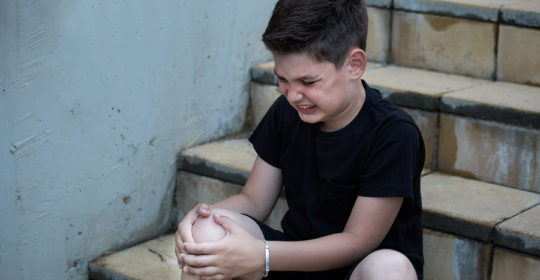
What are "growing pains," anyway?
By: Joseph Mechak, MD
Well, it’s complicated…
“Growing pains” are a common complaint in our school age and teenage visits. I’d love the answer the question in the title more fully, but to be frank, doctors aren’t really sure what they are. Here is what we do know:
What are growing pains – There is no precise definition for growing pains. The term generally refers to intermittent, deep, achy, pains that is usually in the legs but can also be in the arms. The pain typically occurs at night, especially after an active day. The age range varies widely, but they occur most often in school aged children and early teenagers. Somewhere between 20-33% of children will experience growing pains.
What causes growing pains – We don’t know! There are a lot of theories out there but no mechanism has ever been identified. Interestingly, they tend NOT to correlate with periods of rapid growth – so growing pains is a bit of a misnomer. They do tend to be worse after periods of high impact or high intensity activity.
What helps? – To date, there is no cure or specific treatment for growing pains. (Identifying treatment is hard when you don’t know where the pain comes from!) Through experience and some studies we do know a few things can help:
- Rest or time away from high intensity activity
- Variety in activities/sports to balance out muscle use
- Pain control with Acetaminophen (Tylenol) and Ibuprofen (Motrin/Advil)
- Ice or heat – try both and stick with whatever works.
- Vitamin D supplementation if vitamin D levels are low
Are they dangerous? No, growing pains are not dangerous and will almost always get better with time, usually within 1-2 years.
What else could it be? There are lots of things that can cause achy leg pain in our school aged children, especially athletes. A few of the more common causes are below. Each of these have more well defined pathology and, therefore, treatment. So, if these sound more like what your child is experiencing or if you are unsure if your child’s symptoms are truly growing pains, it is worth discussing with your doctor.
- Osgood-Schlatter Disease – This is an overuse injury that is common in children in early puberty, especially jumping athletes. In early puberty, the pull of tendons can be strong enough to cause microinjury to the bone it attaches to. In Osgood-Schlatter Disease, the patella tendon pulls on the upper aspect of the tibia (lower leg bone) and can cause focal pain, tenderness, and swelling. These children may benefit from rest, ice, and in some cases physical therapy.
- Patellofemoral syndrome – More common in older athletes, this condition is caused by misalignment of the kneecap and/or damage to the smooth cartilage between the kneecap and leg bones. This is most common in distance runners, sports with repetitive squatting or jumping, and other high-volume sports. It is hallmarked by pain with going up or down stairs, a ‘giving out’ sensation, and popping in the knees. This often needs rest, physical therapy, and sometimes requires specialist evaluation.
- Other causes – RARELY. I repeat, RARELY… deep, achy, bone pain can be a sign of something more sinister. If your child has any of the symptoms below, you should speak with your doctor right away.
- Severe pain or progressively worsening pain
- Persistent limp or refusal to bear weight
- Redness, swelling, or deformity of the joint
- Lumps or changes in the appearance of the joint or limb
- Fever (with no other associated symptoms)
- Weight loss, easy bruising, night sweats, fatigue
Here are some additional resources and information on the topics above. As always, if you have questions do not hesitate to call, chat, email, or make an appointment with us!
HealthyChildren.org – Growing Pains
MayoClinic.org – Osgood Schlatter Disease
HealthyChildren.org – Knee pain and Osgood Schlatter Disease
HealthyChildren.org – Preventing overuse injuries
HealthyChildren.org – Knee pain and Patellofemoral Syndrome











Leave a reply